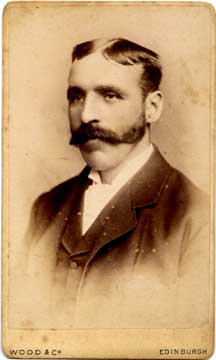Alexander Wood
(1817 - 1884)


Edinburgh physician Alexander Wood and Frenchman physician Charles Pravaz independently pioneered the hypodermic syringe for drug administration.Dr Wood first injected a patient with morphine in 1853. He gave a description of his innovation in a paper entitled "A New Method for Treating Neuralgia by the Direct Application of Opiates to Painful Points", published in the Edinburgh Medical and Surgical Journal (1855). However, intravenous anaesthesia did not become popular until the introduction of barbiturates like thiopentone in the 1930s.
The first recorded fatality from a hypodermic-syringe induced overdose was Dr Wood's wife. The tragedy arose because she was injecting morphine to excess. Later, in the American Civl War (1861-65), an estimated 400,000 soldiers became addicted to opiates after liberal use or morphine injections as well as opium pills: "The returning veteran could be...identified because he had a leather thong around his neck and a leather bag (with) Morphine Sulfate tablets, along with a syringe and a needle issued to the soldier on his discharge...This was called the "Soldier's Disease". (Gerald Starkey)